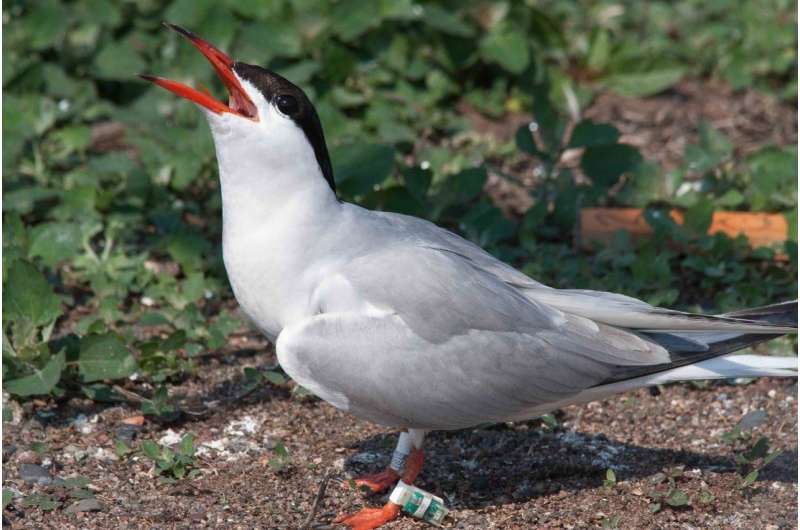Terns face challenges when they fly south for winter

The Common Tern is most widespread tern species in North America, but its breeding colonies in interior North America have been on the decline for decades despite conservation efforts. The problem, at least in part, must lie elsewhere—and a new study from The Auk: Ornithological Advances presents some of the best information to date on where these birds go when they leave their nesting lakes each fall.
The University of Minnesota's Annie Bracey and her colleagues attached geolocators—small, harmless devices that record a bird's location over time based on day length—to 106 terns from breeding colonies in Manitoba, Ontario, Minnesota, Wisconsin, and New York. When the birds returned to their breeding grounds in the following years, the researchers were able to recapture and retrieve data from 46 birds. The results show important migratory staging areas in the inland U.S. and along the Gulf of Mexico—a surprise, since it was previously thought that most Common Terns head for the Atlantic coast before continuing south. Birds from different colonies intermingled freely in the winter, but most ended up on the coast of Peru, suggesting that the population could be especially vulnerable to environmental change in that region.
For long-lived birds such as Common Terns, adult survival likely drives population trends more than breeding productivity, so identifying causes of mortality is crucial for effective conservation. Coastal Peru is vulnerable to multiple effects of climate change, including increasingly frequent and severe storms, changes in the availability of terns' preferred foods, and rising sea levels. "Because survival is lowest during the non-breeding season, identifying coastal Peru as a potentially important wintering location was significant, as it will help us target studies aimed at identifying potential causes of adult mortality in this region," says Bracey.
"This paper is both important and interesting, because it takes a species we consider 'common' and examines the reasons for its decline," adds Rutgers University Distinguished Professor of Biology Joanna Burger, a tern conservation expert who was not involved in the research. "In short, this is one of the first studies that examines the entire complex of terns breeding in inland US locations, along with migratory routes, stopover areas, and wintering sites. It vastly increases our knowledge of the causes of declines and the locations and times at which terns are at risk, and more importantly, provides a model for future studies of declining populations."
More information: "Migratory routes and wintering locations of declining inland North American Common Terns" The Auk: Ornithological Advances, DOI: 10.1642/AUK-17-210.1
Provided by American Ornithological Society



















